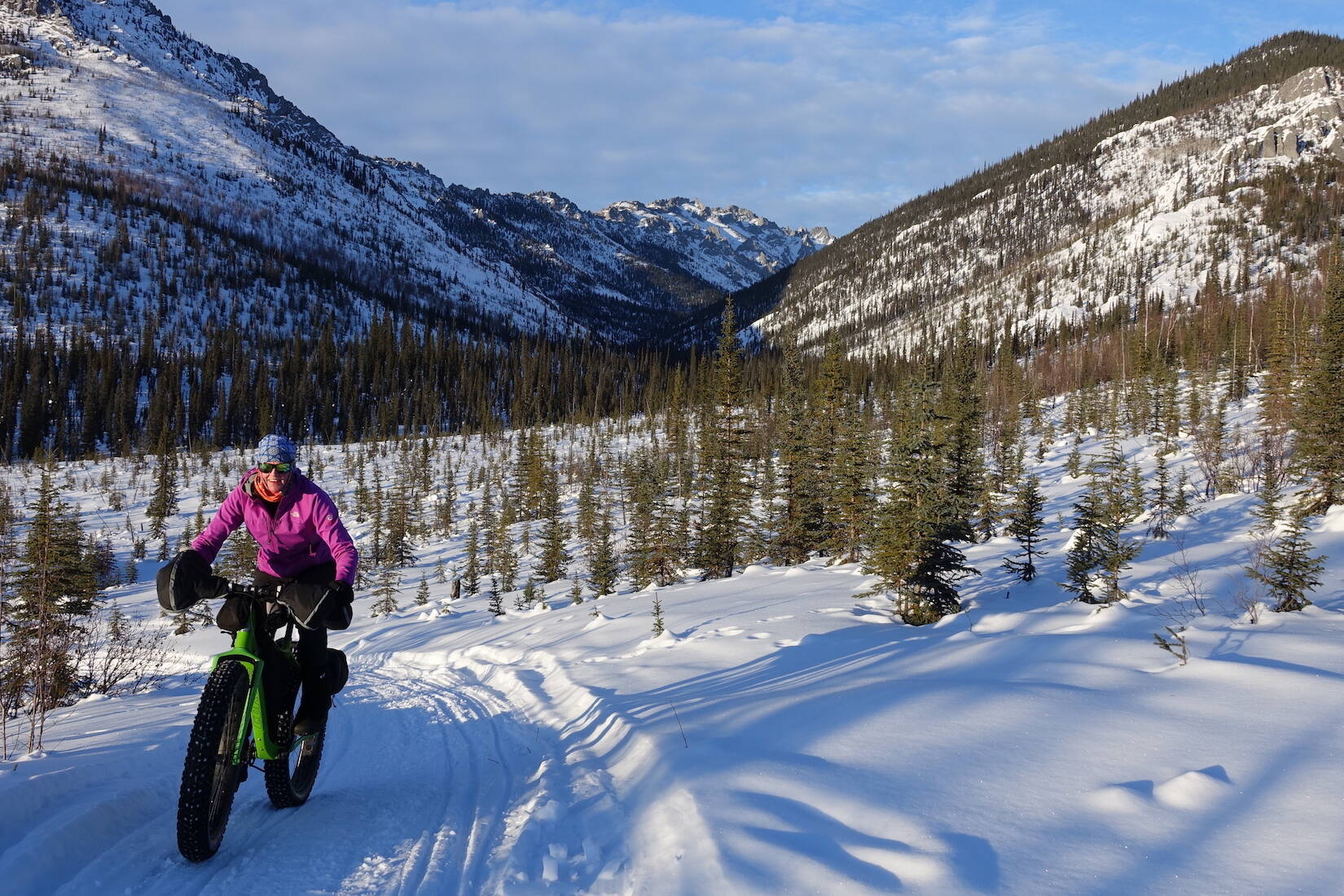While following a snowmachine trail recently, my dog and I came to a low spot that looked like a swimming pool filled with ice water. The air temperature was about 5 degrees F.
Rather than plunge in, my dog and I followed the faint bike-and-boot tracks of friends who had snuck across an ice bridge on the upstream edge of the pool. We continued on, leaving another stretch of “overflow” behind us.
Getting wet at subzero temperatures is one of the few potential hazards in an Alaska winter free of bears and mosquitoes. It’s also one that seems against the laws of physics; how does water remain unfrozen when the temperature of the air is way below the freezing mark?
For an answer, I asked Heather Best, a hydrologist for the U.S. Geological Survey in Fairbanks. She is also a winter biker with many thousands of miles under her tires. And she had — just ahead of me — crossed that same water hazard along with her husband Jeff Oatley.
Alaskans and other northerners recognize fresh water covering a trail (sometimes solid, often wet) as aufeis, or overflow. Aufeis, pronounced off-ice, is a German word meaning “ice on top.”
Aufeis happens because underground springs pump water toward the surface no matter how cold the air above. On some northern waterways, fields of surface ice slowly build all winter; this can leave behind slabs 10 feet thick and acres wide. They don’t melt until late summer.
Dog mushers, snowmachiners and other trail users often encounter smaller patches of aufeis recharged from below. Those overflow patches often happen when a stream channel has frozen beneath the snow surface, plugging up a passage and forcing water to the surface.
While Best claims not to be an expert on overflow, she has pondered its causes many times as she has rolled and skied over it.
She said the surface water that my dog and I pondered was probably there because a pool of water “slowly seeped through the snowpack and built up at the trail crossing.”
Retaining all its air-trapping properties, the undisturbed snow around a visible patch of aufeis often hides the presence of liquid water beneath. People often soak their boots when stepping in snow while trying to walk around glare ice or obvious wet spots.
Since the formation of aufeis is a gravity-driven system, wet and icy sections of trail vary all the time. The gradual nature of freezing also sometimes causes an aufeis sheet to tilt in a treacherous fashion after water reaches a trail of compacted snow, which acts like a dam.
“Any water seeping into the trail dam freezes there,” Best said. “Eventually the water reaches the elevation of the top of the trail and tries to flow across, only to freeze.
“This continues to happen vertically and laterally, which is why we find these sloping ice fields.”
Best had a tip for negotiating those canted fields of trail ice.
“If we step on the uphill side there will be water-saturated snow, but we can often sneak by on the downhill side where it is still mostly dry,” she said.
Best said that hazard we faced at Wickersham Creek in the White Mountains National Recreation Area had probably already wandered a bit.
“I would expect this overflow area to freeze over and force the process to start again and probably at a slightly different spot along the trail.”
• Since the late 1970s, the University of Alaska Fairbanks’ Geophysical Institute has provided this column free in cooperation with the UAF research community. Ned Rozell ned.rozell@alaska.edu is a science writer for the Geophysical Institute.

